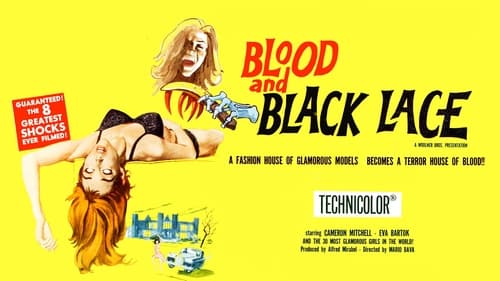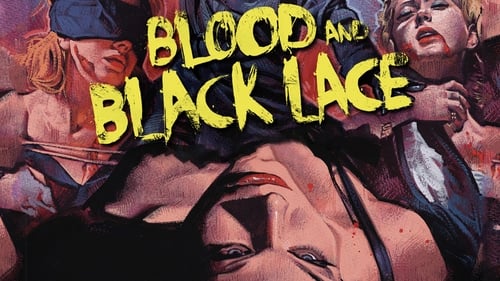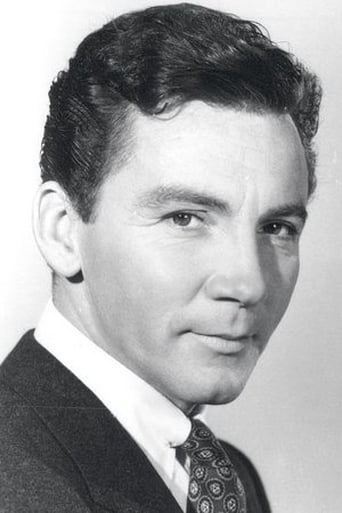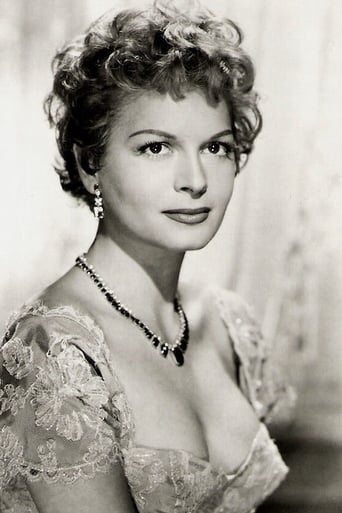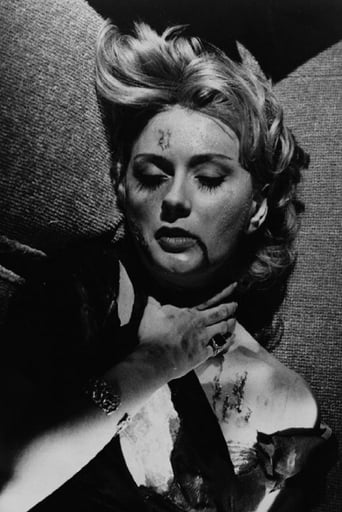Acensbart
Excellent but underrated film
WillSushyMedia
This movie was so-so. It had it's moments, but wasn't the greatest.
TrueHello
Fun premise, good actors, bad writing. This film seemed to have potential at the beginning but it quickly devolves into a trite action film. Ultimately it's very boring.
Taha Avalos
The best films of this genre always show a path and provide a takeaway for being a better person.
Mark Turner
I can't say this loud enough. This is one of the most gorgeous films I've ever seen released on blu-ray. Seriously it is a visual delight. Let me put it this way and this is no fault in the film. I had to start watching this film 4 different times. I made the mistake of doing so late at night and was so tired I'd fall asleep. Again, this was no fault of the film. And each time I went back, including the final time, I always started at the beginning. Not to remind me of what happened but because I so enjoyed the look of the film. It is beautiful! So let's get the story out of the way first shall we? The film opens with the murder of Isabell, a model who works in an haute couture fashion house on her way home on a dark and stormy night. Her body shows up the next day in a studio closet. As the police begin to investigate the number of suspects grows rather than dwindle. It seems most of the other models had some reason or another to fear Isabella. The owner, the studio's manager, friends and other co-workers as well.A diary that Isabella kept is also discovered but before it can be taken to the police it is stolen. The woman, another model, who stole the diary is tortured and also found murdered. Each time we see the murderer he/she is clothed in a black coat, black gloves and a full face mask. The identity of the murderer as well as who will survive are not revealed until the end of the film.Yes, the story can seem fairly simple. But the twists and turns presented in the backstage issues among the cast make it as much a melodrama as a near perfect giallo film.For those who don't know what giallo is it is a genre of Italian film named so because they presented whodunits, murder mysteries that were similar to the style of writing found in books published in that country that were published with a bold yellow border, giallo meaning yellow in Italian. Those books which featured the writings of Edgar Wallace, Sir Arthur Conan Doyle, Agatha Christie and more were quite popular. The films were mostly whodunits as well but had several items that became running themes, among them a killer whose face is not seen who wore black gloves. The amount of violence was also fairly extreme for the time and was a noted feature.So what makes this one stand out? The director of the film was Mario Bava, a noted Italian director who came from a cinematographer background. For Bava the look of the film was as important as the story being told if not more so. It shows in this film. The colors used here virtually leap from the screen. Bava used extremes in color to highlight various scenes with the murders taking place in a highly stylized use of lighting and color that I've not seen before. It helps the story rather than hinder it. It catches your eye and makes you watch just to see the images on screen.It was also one of the first of the giallo films, some calling it the very first made although there were a few others that qualified. While it was released in 1964 it holds up to today's standards. Younger viewers might think it is ripping off any number of slasher films they've witnessed but the fact is it was there long before the rest. The film led the way for directors that followed, including the most famous of these other than Bava, Dario Argento. Having worked with Bava the influence he had on Argento is obvious.It's hard to describe just how amazing this film is visually. I know, I keep raving about it but it really is that great. From the opening credits my eyes went wide watching what was on the screen. I kept asking myself how I had never seen this movie but then I thought what sort of condition would it have been in had I seen it years ago? Arrow Video has done an amazing release with this one offering it in a 2k transfer and in 1080p. Until you watch it you won't realize just how amazing the film looks because of this.Not only have they done a great job with the presentation of the actual film the extras are so good that even I watched them. And keep in mind, I'm not one to watch all of the extras on every film. But Arrow does such a great job of it that I can't help myself. Space doesn't allow me to go into detail what they've rounded up but trust me, it is well worth it.Arrow Video has pulled out all stops on this release and it shows. Fans of the film will go insane over the combination of extras combined with the gorgeous presentation. Horror fans may end up discovering a treat that they somehow missed like I did. And collectors will find this a must have for their shelf, an original film that delights all of the senses. For some it might seem dated but for those willing to take the trip this is one Italian film that should be required viewing for film fans and one that I know I'll be watching more than once.
Leofwine_draca
Mario Bava's acclaimed masterpiece of murder and mayhem is widely considered to be the first real "giallo" film. That is, the sub-genre of films which consist of a series of murders perpetrated by a masked villain who is unmasked at the end of the film. These films always have detectives investigating the cases too, and Dario Argento was very fond of this particular type of movie. However, BLOOD AND BLACK LACE is the one that started it all back in the early sixties.Any fan of murder mysteries should watch this film as the twists and turns are very good, enthralling even, and keep the viewer's mind working overtime to figure out who the killer actually is. There's a fair share of red herrings and suspects to contend with, all lensed with Bava's famed stylish camera-work and brimming with sinister atmosphere - the screen is almost always full of shadows, where killers lurk unseen. Watching this film today, I'm reminded of many later films which consciously or not resemble this movie. The killer's blank white face is very similar to that of Michael Myers in HALLOWEEN, except more effective because there are no features, there is no face - it's just blank and expressionless, devoid of humanity. This makes the killer a very frightening and mysterious one indeed.The cast all give it their best and are commendable. The women do their bit and act terrified accordingly. The men are all shifty and suspicious looking, so it's very difficult to spot who exactly is the murderer. The murders are violent and almost always include the victims in their underwear, perhaps giving the title meaning and at least providing some lurid attractiveness - while not gory, we still see the agony of death, the throes of pain. They're very brutal for the time too.A quiet yet effective score provides some suspense, as well as the dark and shadowy sets. The plot weaves all over the place, yet it never becomes absurd or over the top - instead, remaining believable and exciting. BLOOD AND BLACK LACE is really a great Italian thriller, made by one of the masters of horror, and should be seen by any self-respecting mystery, thriller or giallo fan.
Michael_Elliott
Blood and Black Lace (1964) **** (out of 4) Mario Bava's ground-breaking murder-mystery takes place around a model agency where one by one women begin to be murdered by a person dressed in black and a haunting white mask. A police inspector appears to have a list of suspects narrowed down but soon he realizes that there are many twists ahead of him.BLOOD AND BLACK LACE might not have been the first giallo ever made but there's no question that it had the biggest impact on the genre and it influenced everything that was to follow. It's easy to watch this film and see how it would influence the likes of all Italian mysteries going forward and especially those of Dario Argento. It's been said that Bava was a genius with the camera and that's obviously true by watching this Technicolor gem that jumps off the screen from the opening shot to the very last.To me the real star here is the actual look of the film. From the opening shot to the very last you're greeted with some of the greatest and more lured images that you're ever going to see. Several directors were able to work wonders with Technicolor but I really can't think of too many who used the colors so well. Just take a look at the great detail in the various red colors throughout the picture. Whether it's a diary, a phone or blood flowing through a tub, the color just jumps out. The solid black look of the killer is something else that really stands out in the picture and just take a look at the sequence where a light flickers on and off to highlight the killer.The film offers up some very good performances from the cast. Even though Cameron Mitchell is the only "name" here, everyone does a very good job in their roles. The death scenes are quite poetic in their own right and there's no doubt that the mystery keeps you guessing right up to the end. Another thing I've always loved about this picture is Bava's style. It really just seems as if the camera is floating from one scene to the next in a poetic way that captures the beauty of everything we're seeing on the screen but also ties everything together.BLOOD AND BLACK LACE is one of those landmark films that has been copied dozens of times over the years but it's lost none of its luster. The film is as impressive today as it was the day it was released.
MARIO GAUCI
Rewatching this in close proximity to Bava's initial forays into the "Giallo" subgenre, namely THE GIRL WHO KNEW TOO MUCH and the "Il Telefono" segment from THE THREE FACES OF FEAR (both 1963), I was reminded of the late esteemed British film critic Leslie Halliwell's opening comments in his capsule review of James Whale's BRIDE OF FRANKENSTEIN (1935) – where he states that, while the 1931 original was "startlingly good", the follow-up proved a "sophisticated masterpiece". This was only the fourth effort by the director that had come my way back when I first got the opportunity to check it out in 1998 – via a late-night Italian TV screening exhibiting a print so battered that, at times, it was almost devoid of colour (such a vital factor to the director's aesthetic)! Unlike the preceding three Bava viewings, I recall loving this one immediately regardless, and it remains even now my personal favourite of his oeuvre… While there are definite links to the contemporaneous "Krimi" trend (this was, in actual fact, a German co-production) and the work of Alfred Hitchcock (the technical dexterity, audience manipulation, and even having the murderer repeatedly 'clean up' after his misdeeds – like Anthony Perkins in PSYCHO {1960}), there is so much groundwork here for subsequent entries in the field that one cannot stress too much the film's impact on the development of the thriller genre worldwide…however, without it ever seeming an outmoded prototype or coming across as a stuffy history lesson. Until the advent of Dario Argento, ushering in the new decade with greater emphasis on baroque violence and ostentatious camera gymnastics (not that Bava was one to be kept lagging behind – promptly responding with the "Slasher" template A BAY OF BLOOD {1971}!), this was the film to emulate…but, by and large, the initial results were not very encouraging. The director himself was wise not to play his hand too frequently – so that he made all of five and one-third contributions to the "Giallo" format during his career, unlike Argento's 15 (albeit over a much longer timespan)! Anyway, it is all pretty much laid down here already: the black-gloved killer, the fashion-house setting, the Police procedural, a variety of suspects (each determined to safeguard a terrible secret), the suggestion of misogyny (rendered unequivocal by the original Italian title – which translates to "Six Women For The Murderer"!), the splash of colours (including – inevitably – crimson), the creative murder weapons, the tantalizing soundtrack (to my mind, this constitutes Carlo Rustichelli's finest hour), not to mention the twist in the tail (which was still being ripped off more than 30 years later by the likes of Wes Craven!). Incidentally, I own two DVDs of the movie: VCI's initial single-disc U.S. release and the German company Hande Weg's edition: both are satisfactorily stacked with supplements (though the majority of the latter are, alas, not English-friendly!) but the image is superior on the R2 effort. Bava's mise-en-scene here is near-perfection, letting the camera prowl the various sets in search of nail-biting suspense situations (notably a woman's handbag containing an incriminating diary being left unattended on a table during a fashion show and then disappearing while props are being moved around in the atelier) or the next display of sadistic – but not gloating – violence (indeed, seldom has death been so enthusiastically arranged or lovingly photographed on screen!).With this in mind and as had been the case with Bava's Gothic Horror debut BLACK Sunday (1960), given such a seminal title, one tends to overlook any flaws (which may be down to plot logic – why, if everyone fears what the diary could expose of their various foibles, do the other characters not try to get hold of it like the killer? – or insubstantial characterization – admittedly, always a pitfall where ensembles are concerned). The cast is peppered with regulars of the director's work (Cameon Mitchell, Dante Di Paolo, Massimo Righi, Franco Ressel, Luciano Pigozzi and Harriet White Medin), but also such new 'recruits' as leading lady Eva Bartok and Lea Lander (who would subsequently prove instrumental in bringing Bava's unfinished RABID DOGS {1974} to light!).








